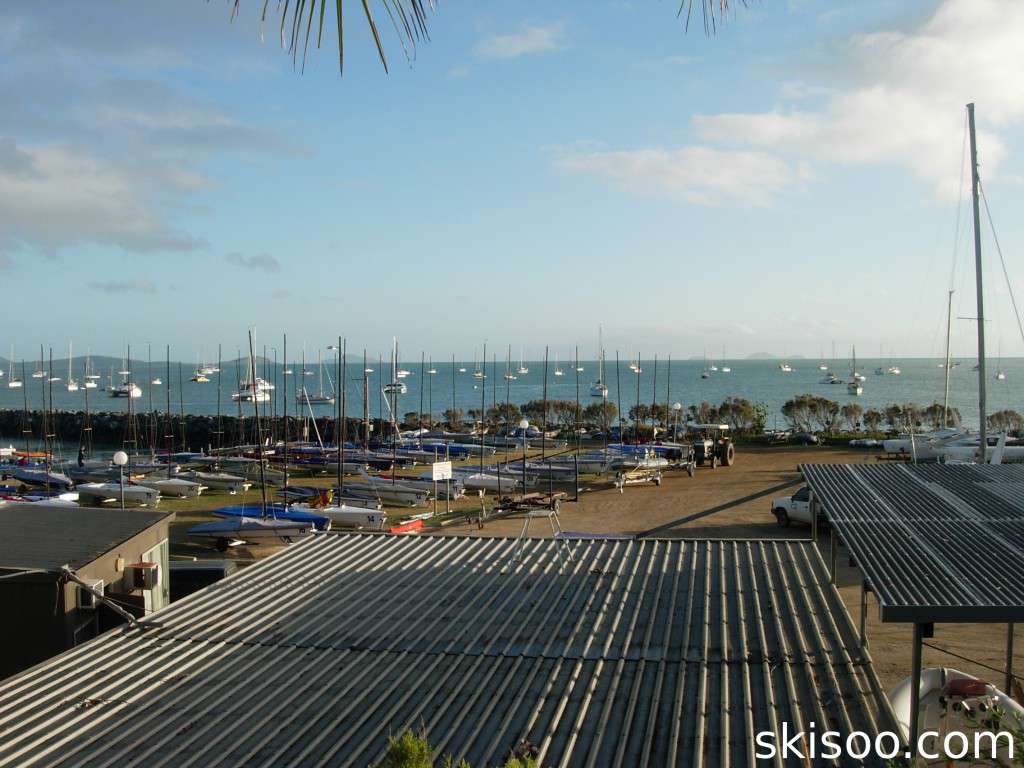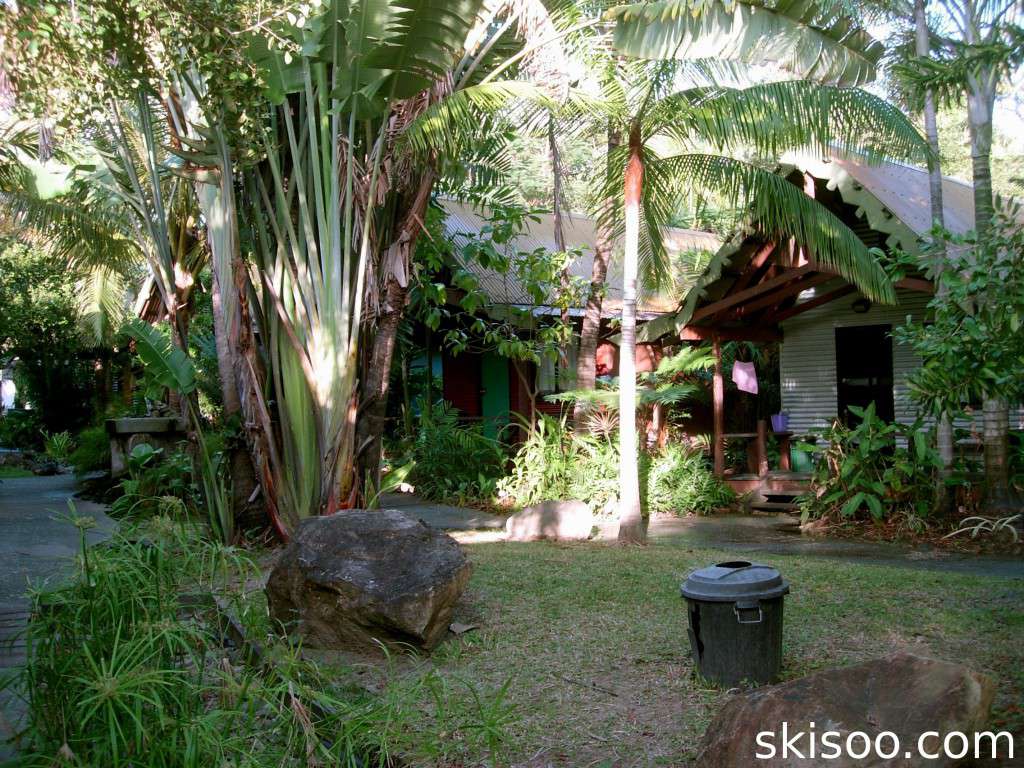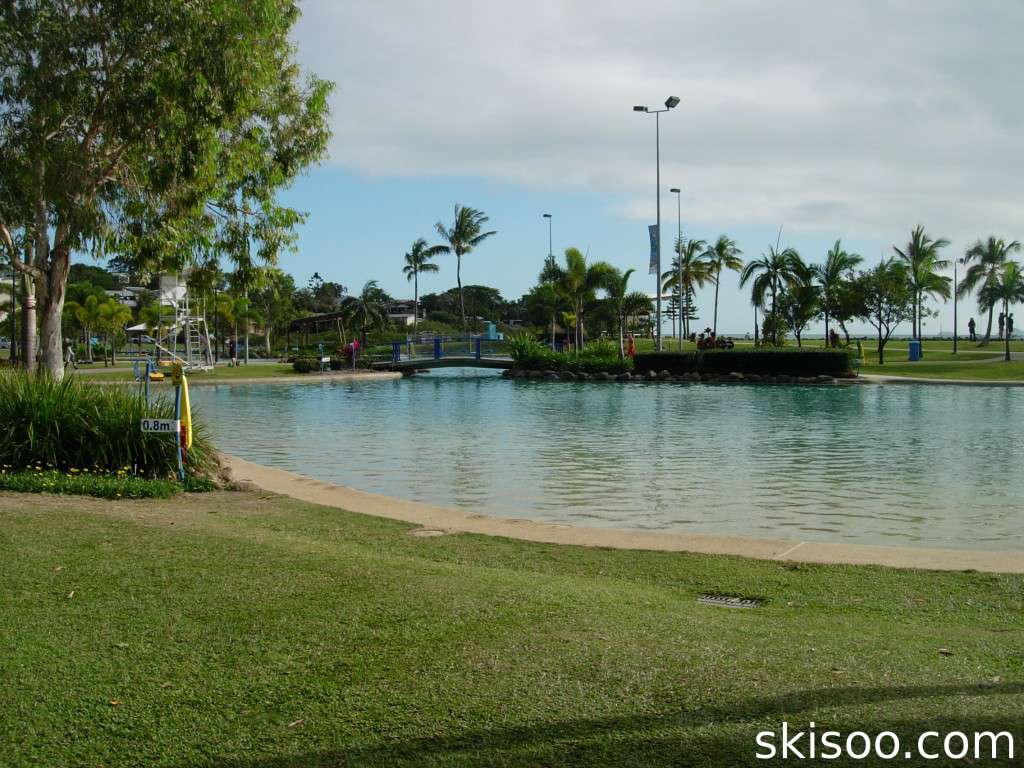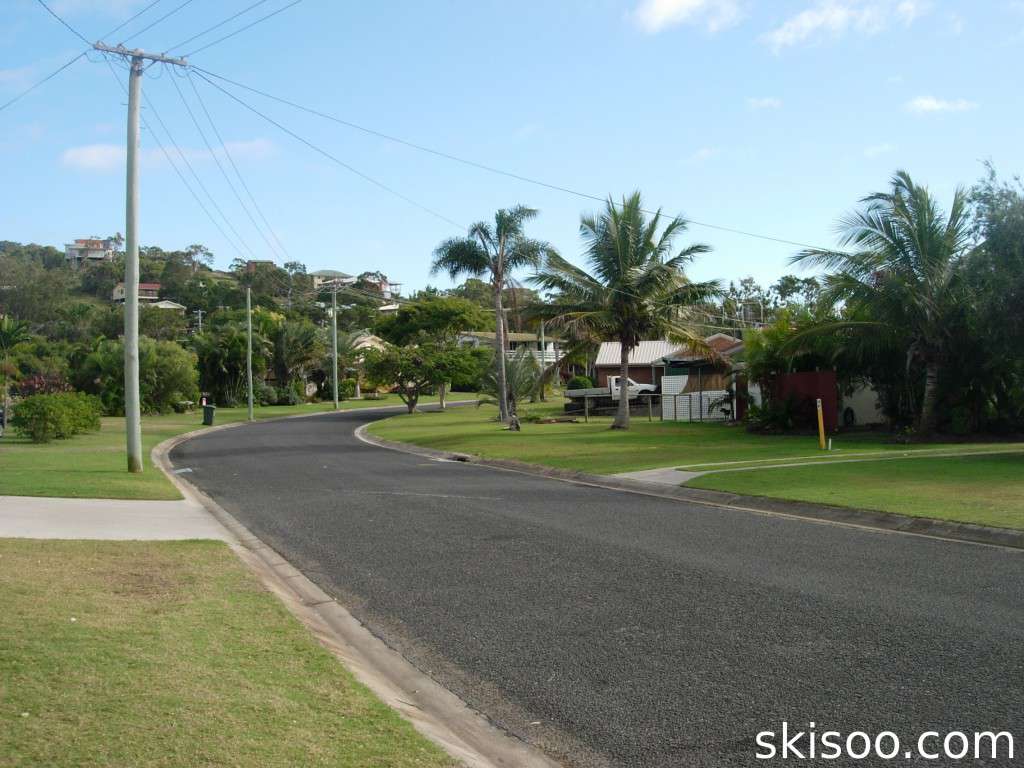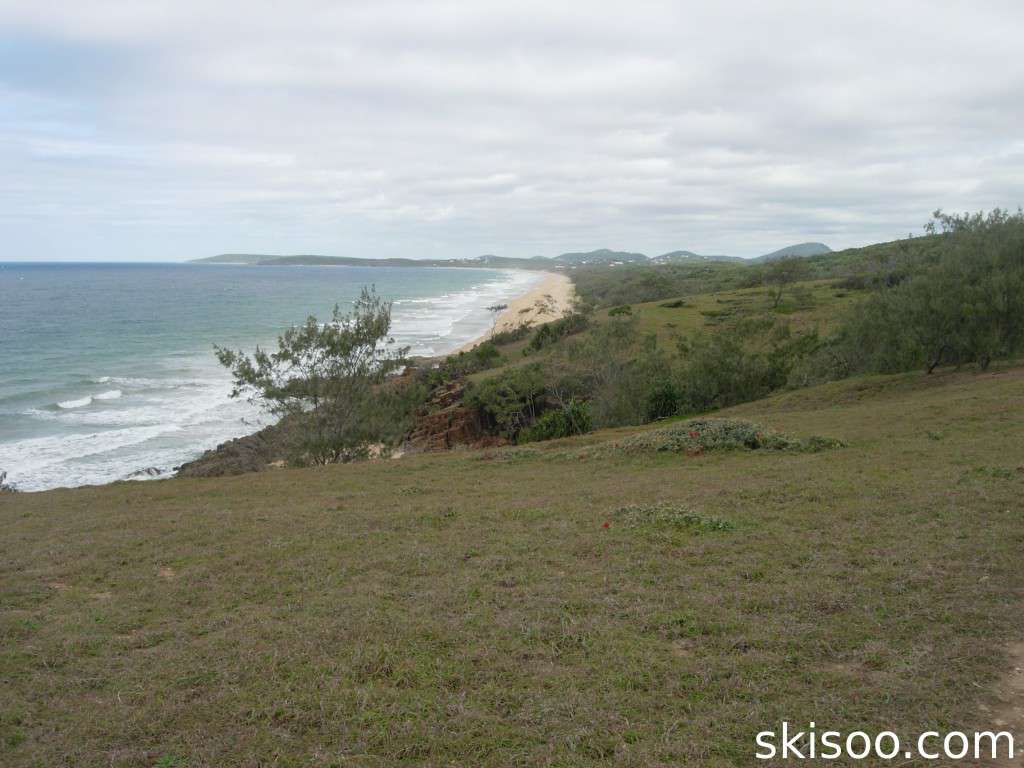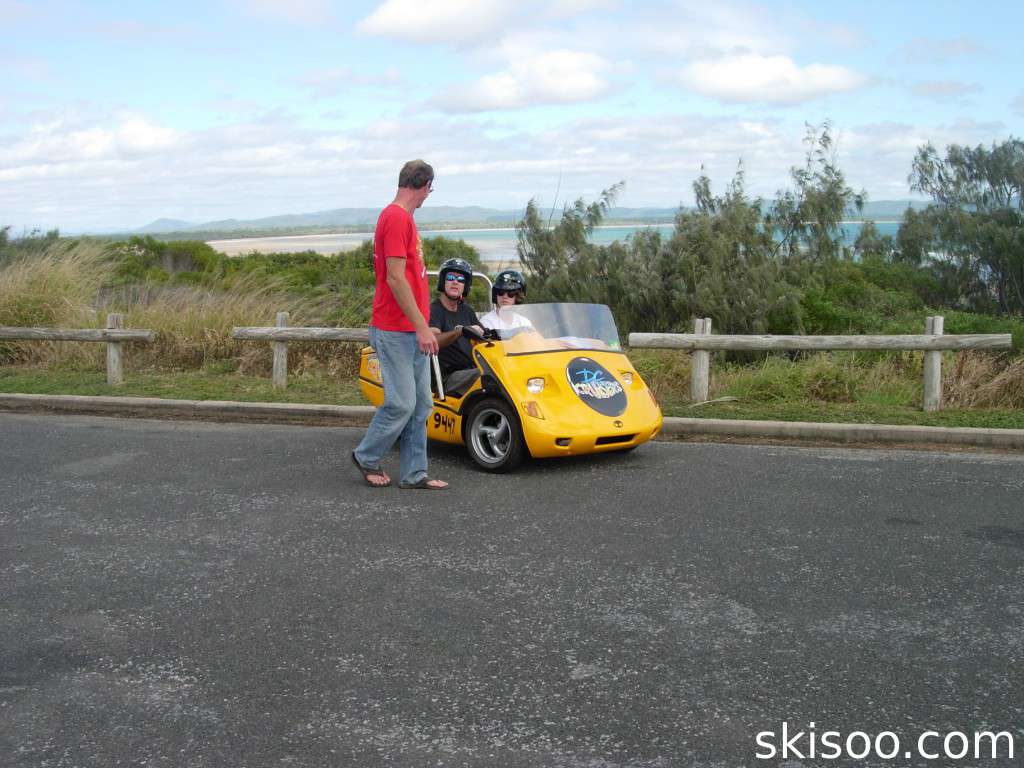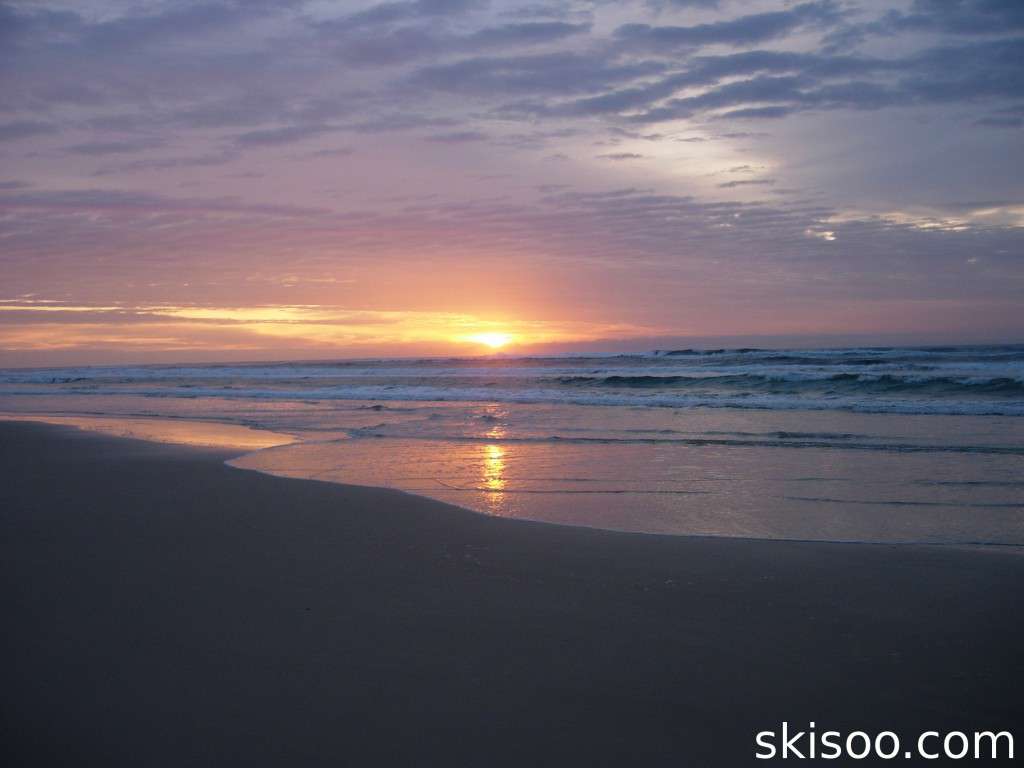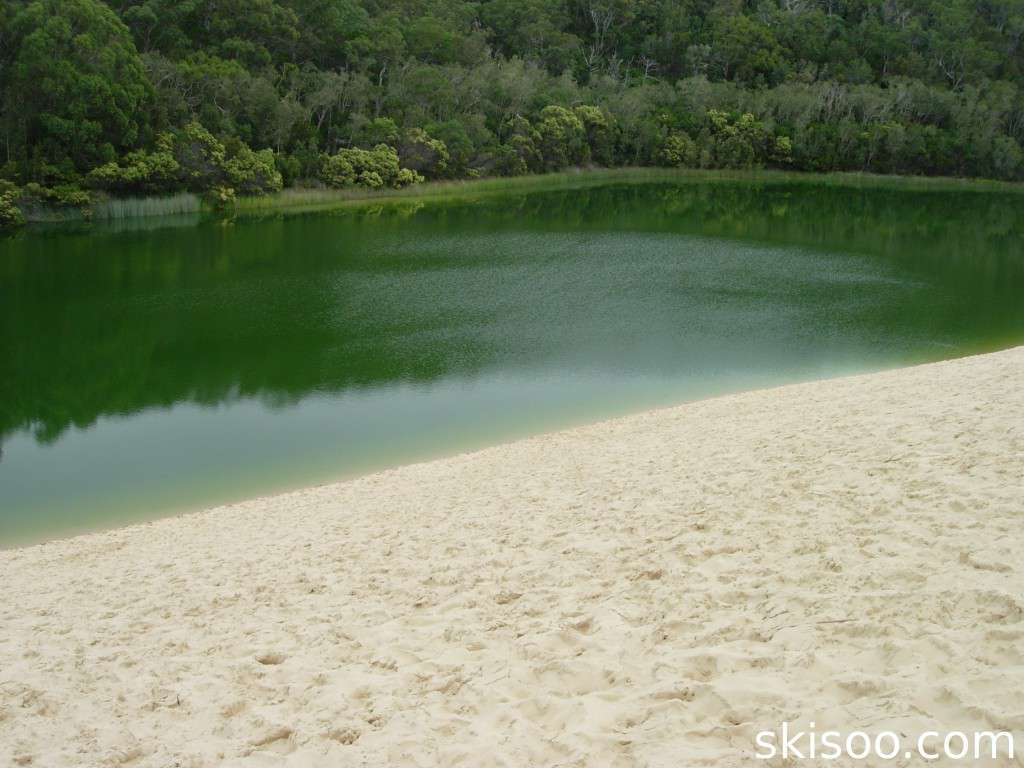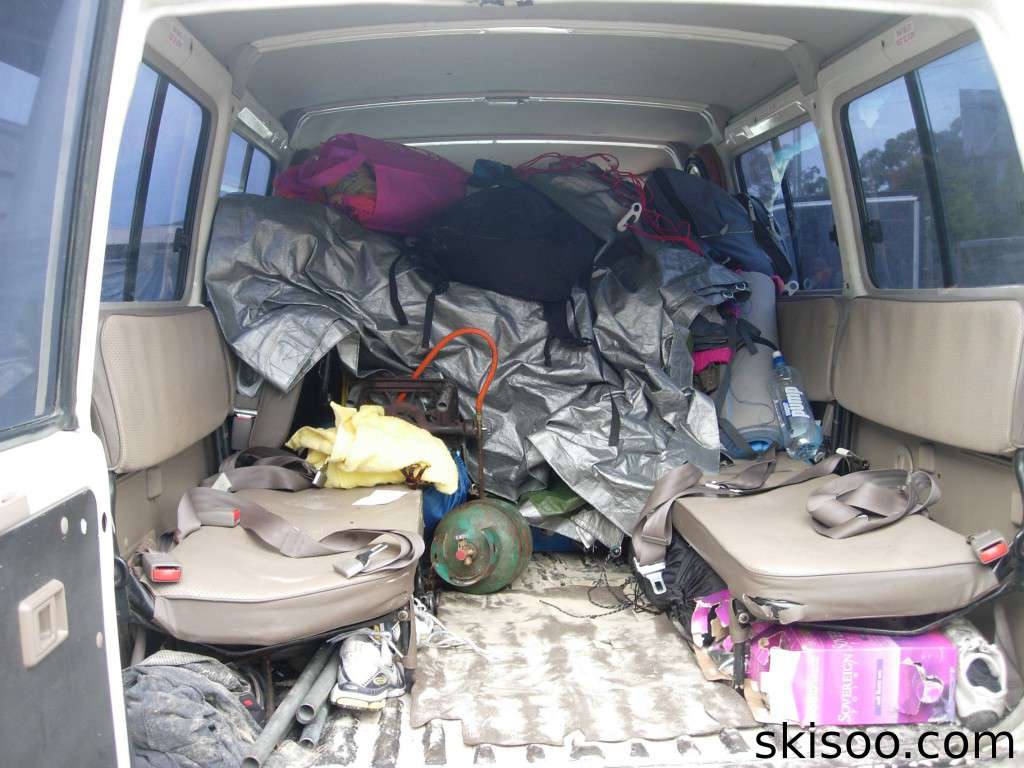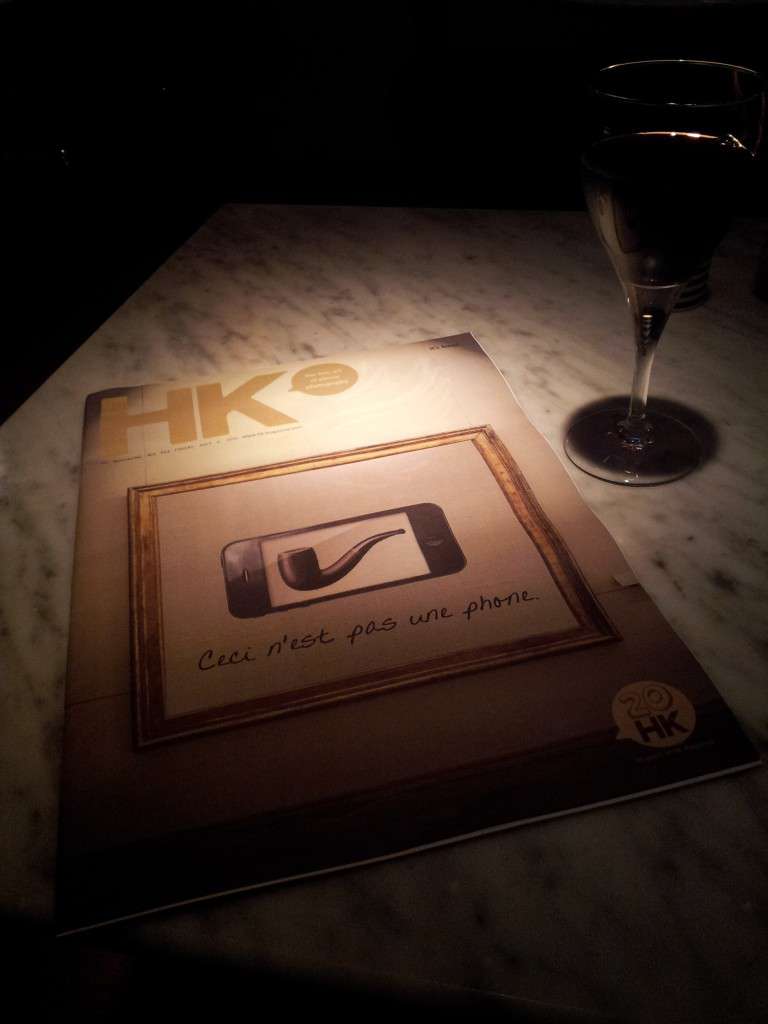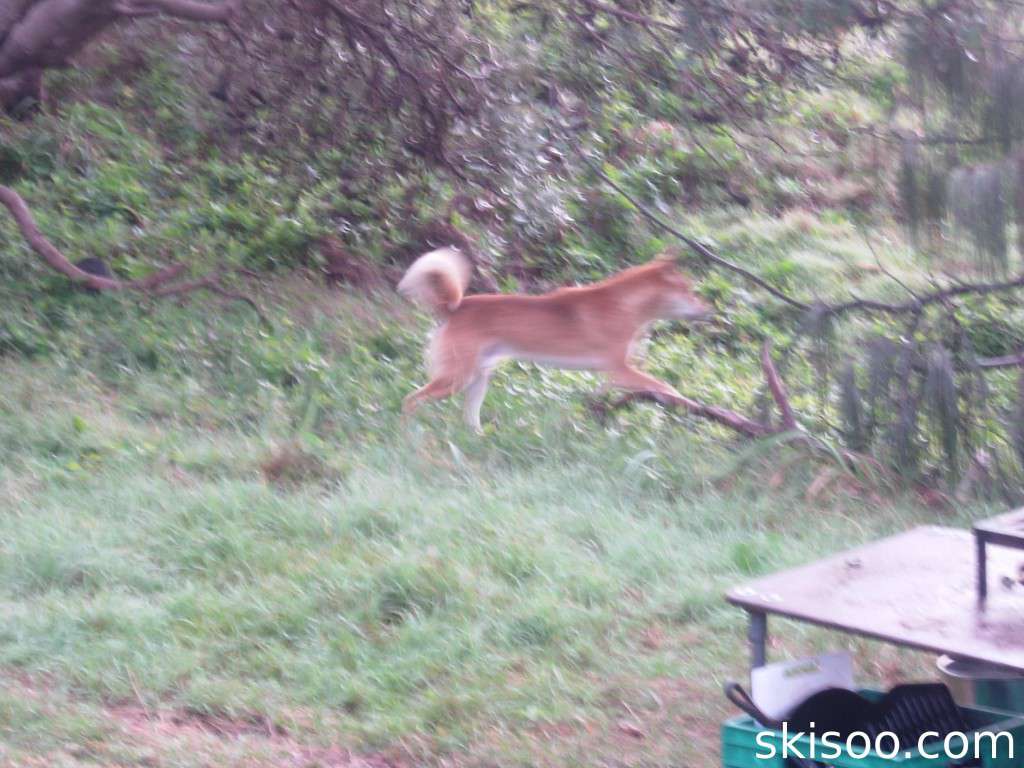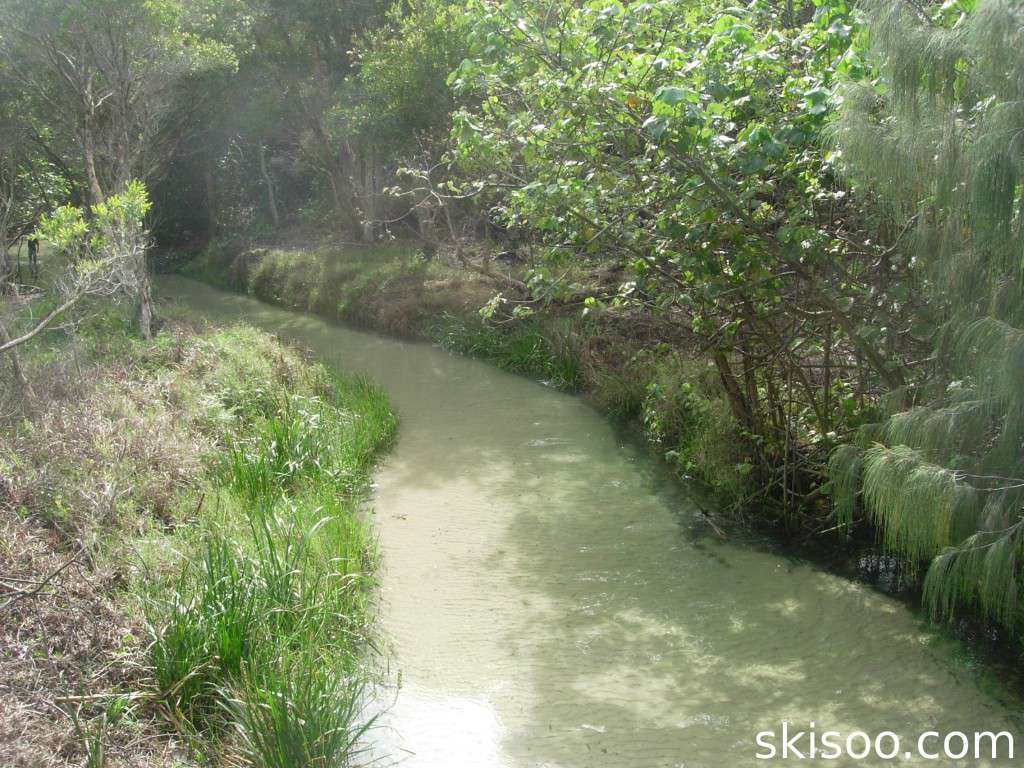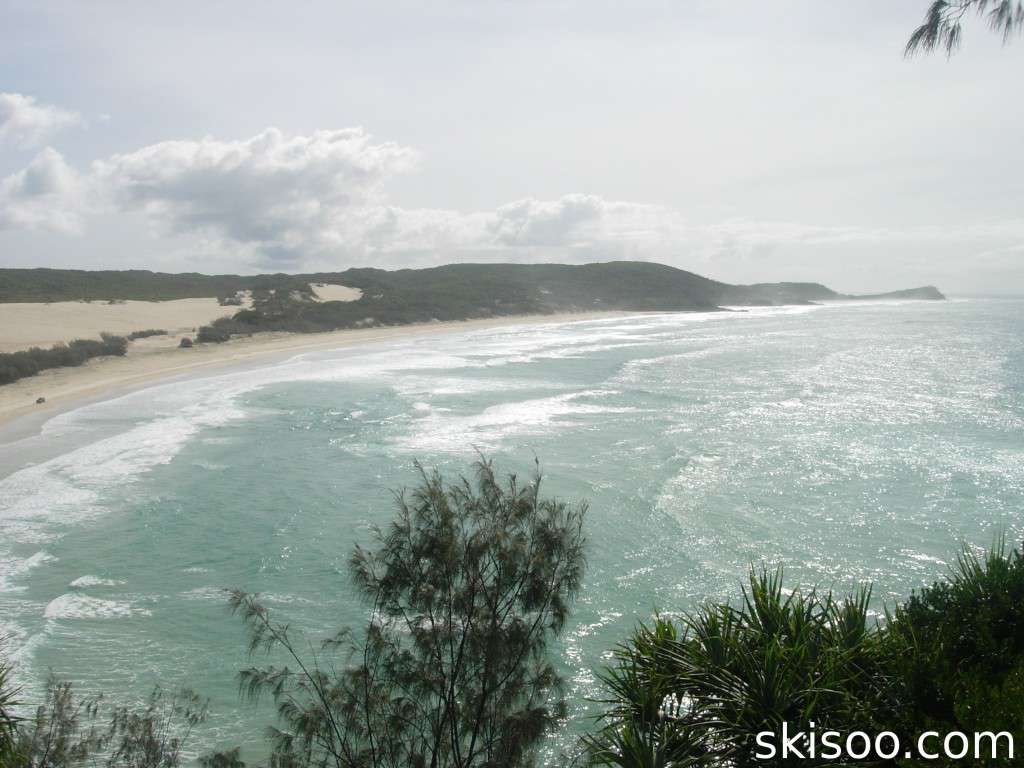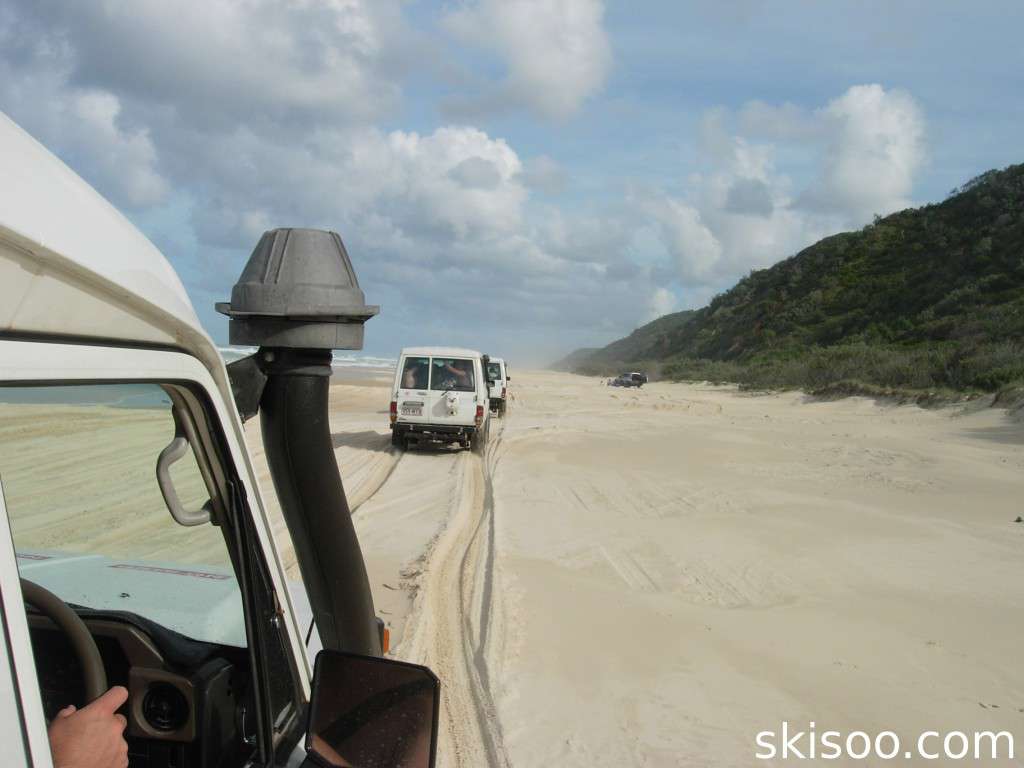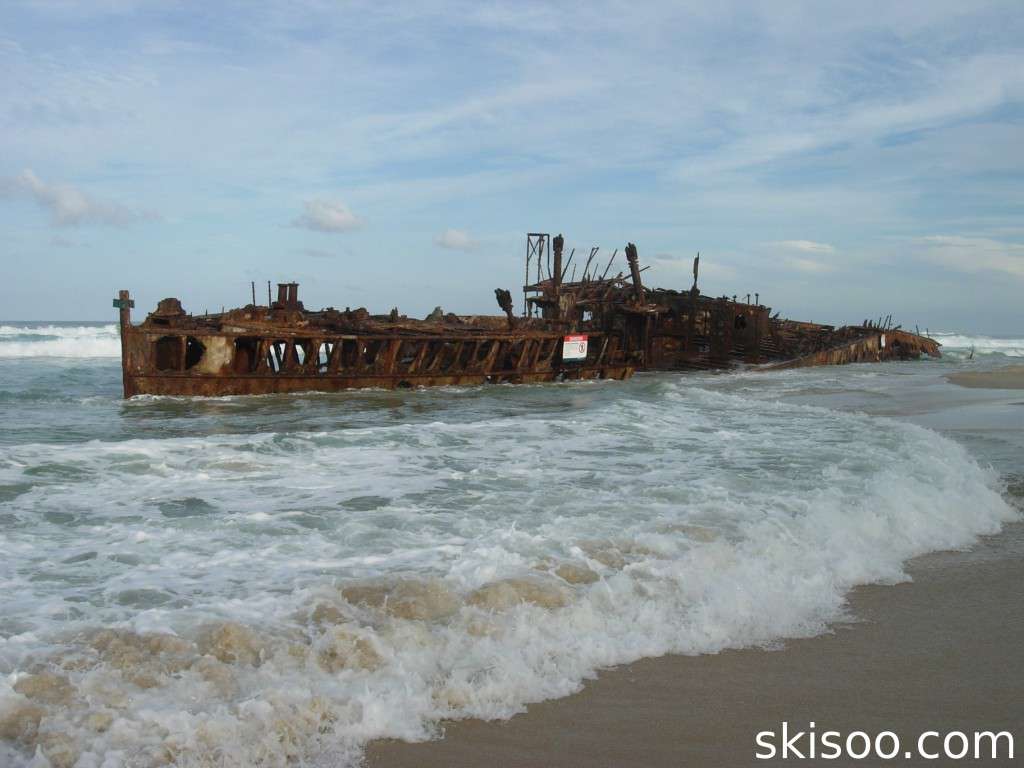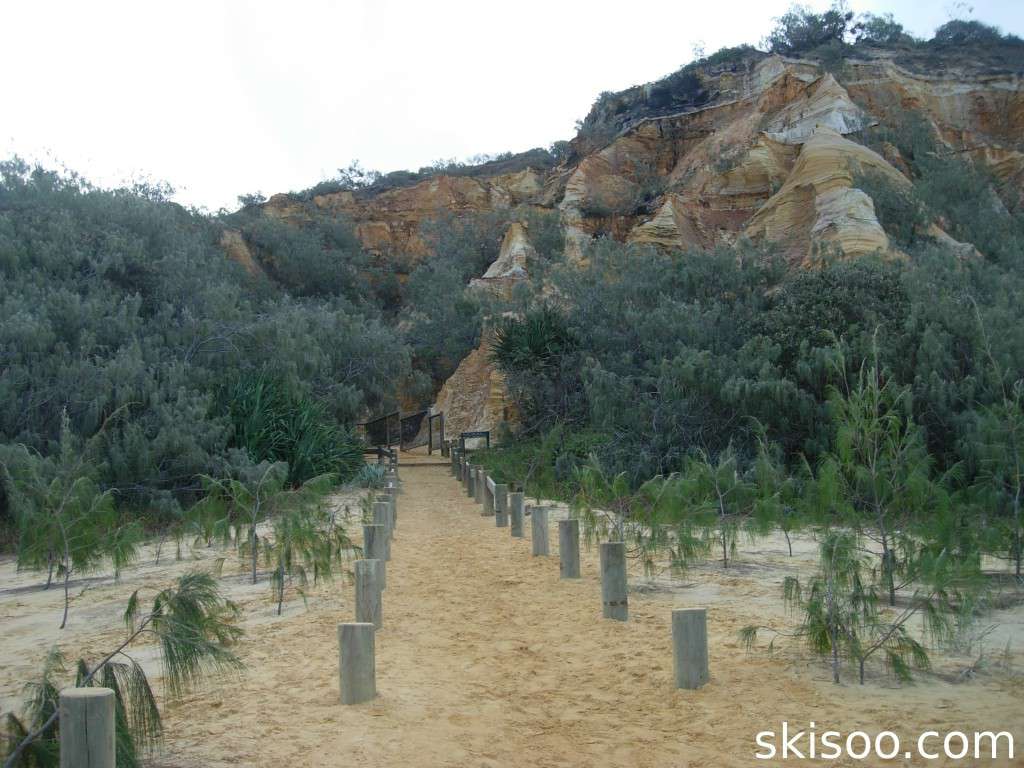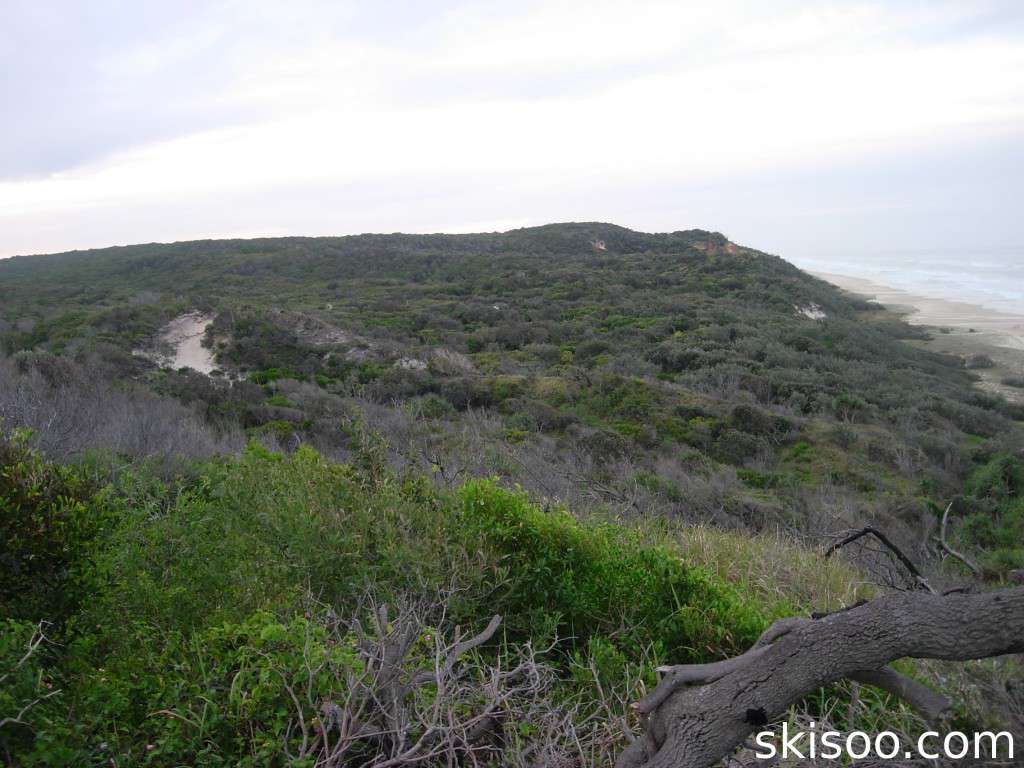After breakfast, we went behind the inn to follow the basic explanations on how to use the 4 wheel drive, and after that, we had to fill our car with all the equipment, personal belongings and food for 8 people for 3 days. It’s amazing how many things you can fit into a 4 × 4 in addition to 8 passengers. Bad luck for those at the back for there was not much room for the. Around 11 am, we departed with four 4 × 4 fully packed rushing for the ferry!
Just before reaching the island, we stopped at a checkpoint where the rangers checked to ensure that everything was in order and that we have the permit to go on the island. They also showed us a big snake lying around ( and which can be quite violent in Australia).
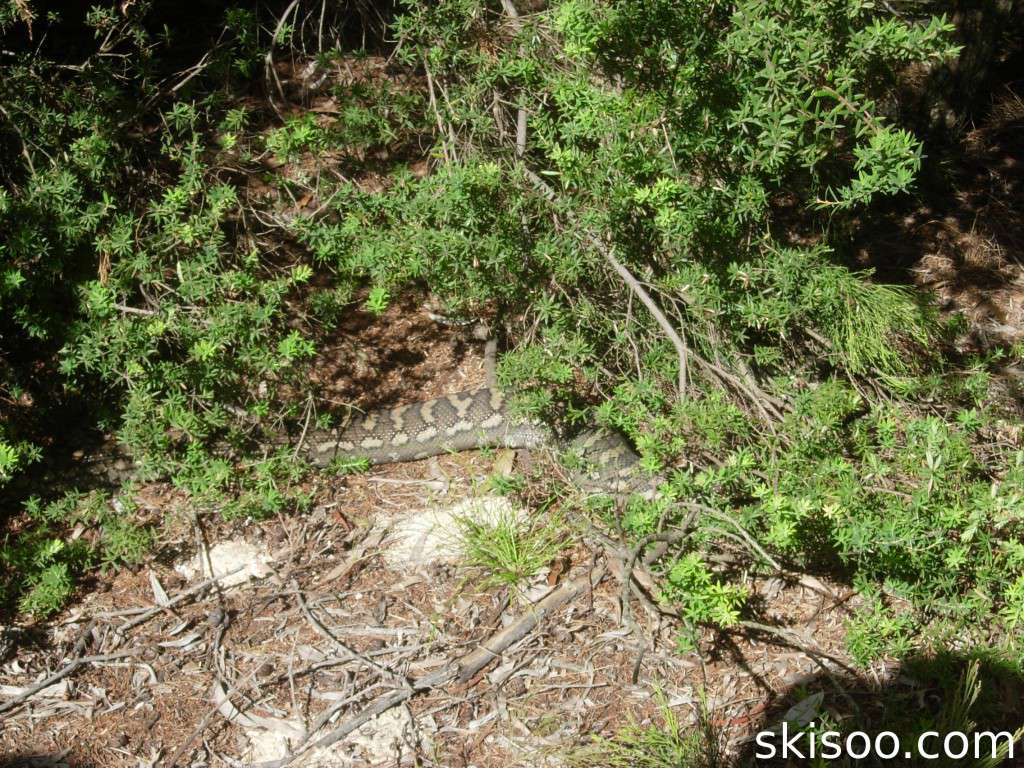
The snake
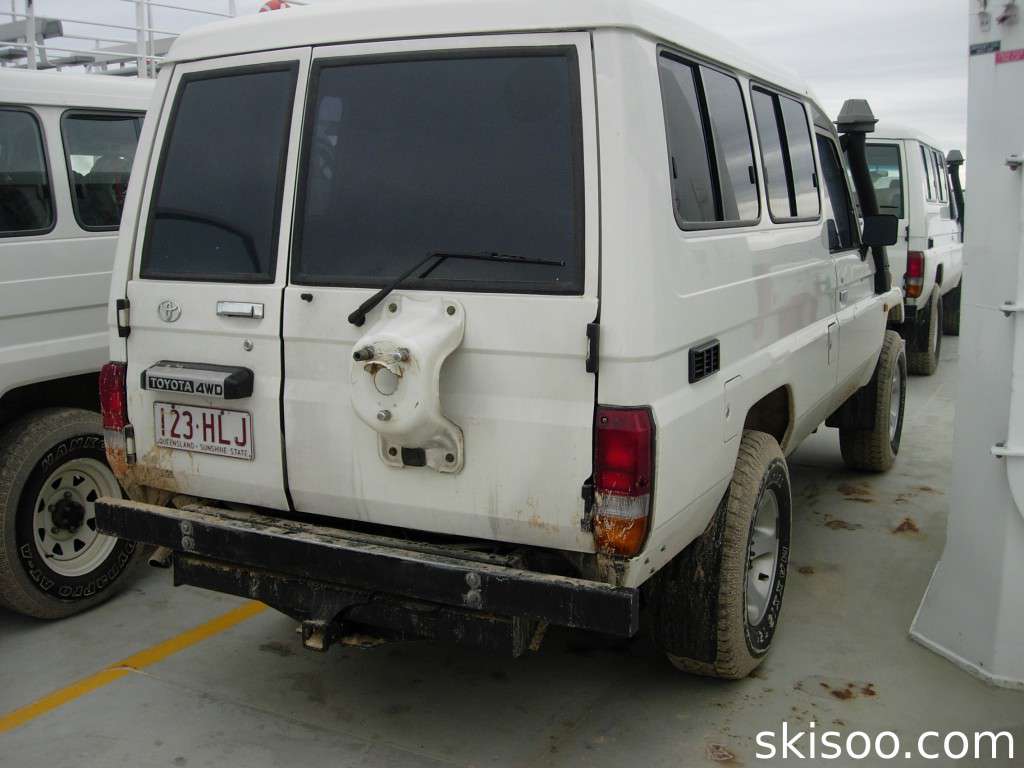
Our car in the ferry
After 30 minutes of ferry ride, we arrived on Fraser Island, an island formed primarily of sand, 124 km long and 24 kilometers wide, containing several freshwater lakes and covered by tropical forest.
The first to make it onto the sand with the 4 × 4 driving is the Dutch. Fortunately for him, the sand is hard and he can drive fast enough. The first stop after forty kilometers was Lake McKenzie, one of the most famous lakes of the island. The water has an impressive clarity, partly due the fine white sand from the beach and although it is in the middle of winter, the water temperature is relatively pleasant. Then, as you swim in the lake, the very clear water at the beginning becomes suddenly very dark, as the bed became at once very deep. It’s quite impressive yet unsettling at the same time.
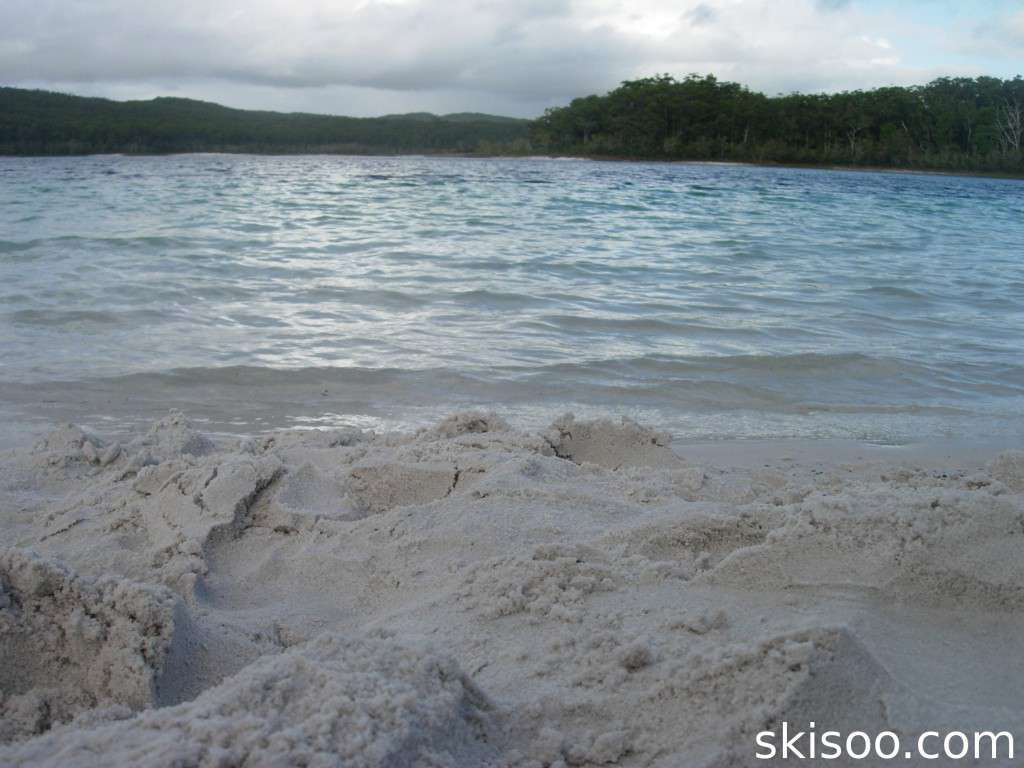
Lake McKenzie
After the lake, we spent the rest of the afternoon going north before setting the camp when the sun began to set. As it is wild camping we have to manage with what is in the 4 × 4, everything is present to make a nice dinner in a small clearing about twenty meters from the beach.
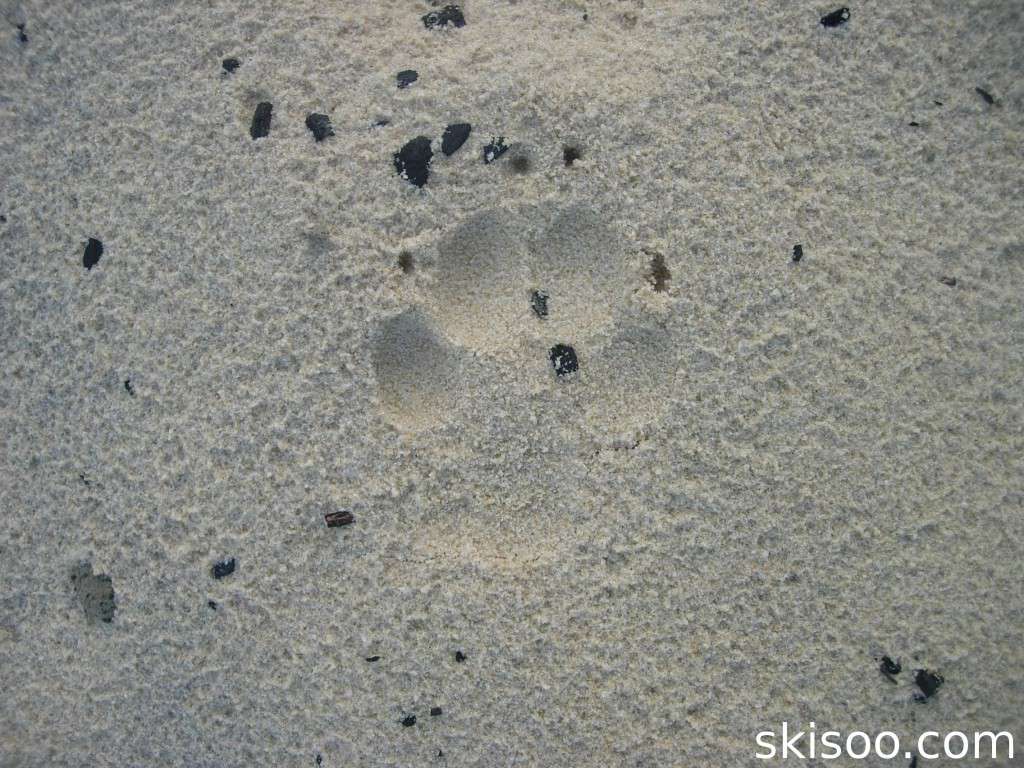
Dingo's prints
Tour: http://www.peterpans.com.au/backpacking-holidays-australia/3-day-fraser-island-tag-along-road-trip
Map of the island



